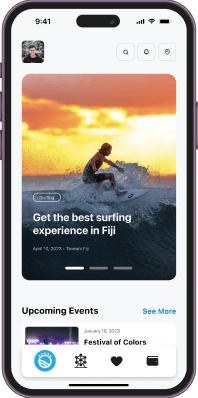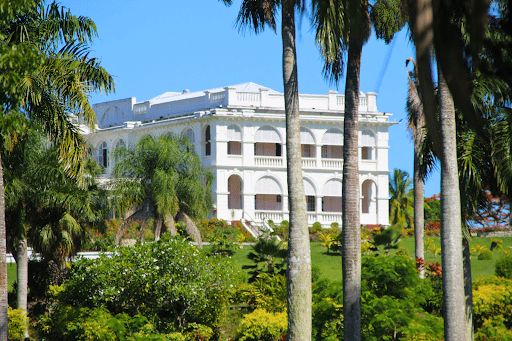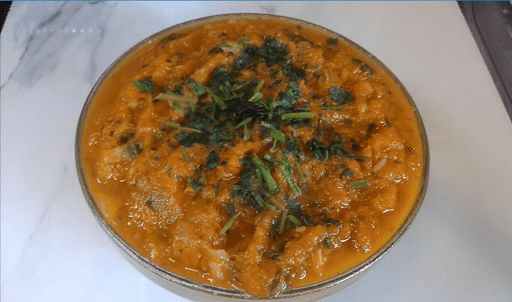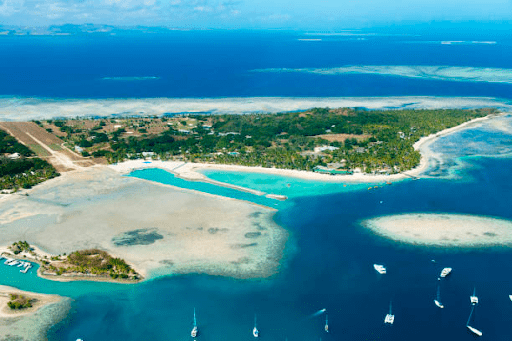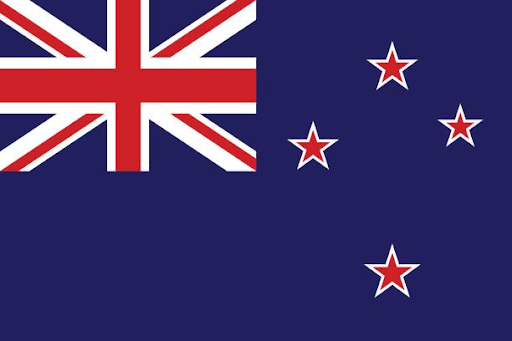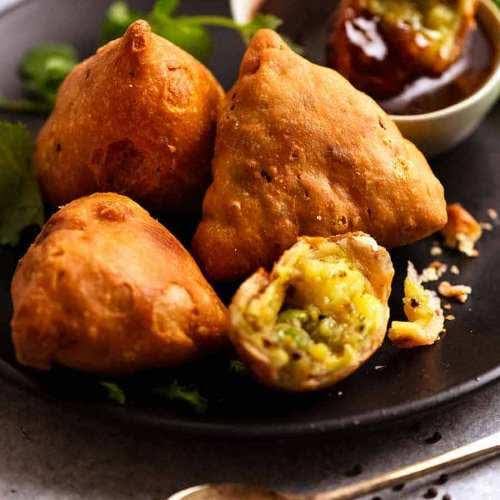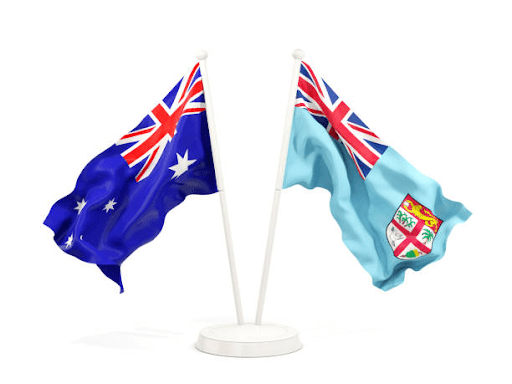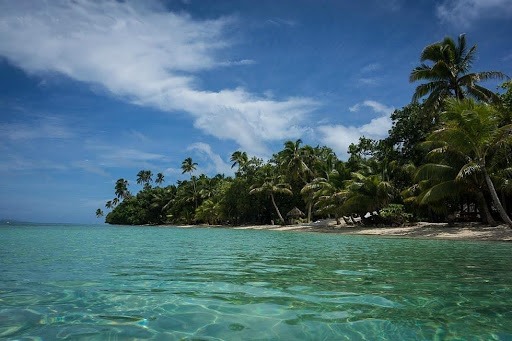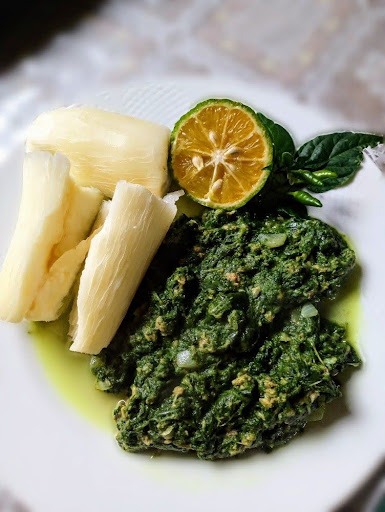10 historical sites to visit in Suva
Suva, Fiji’s capital city apart from Levuka is the only place in Fiji where one can still see the remnants of this former British colony, with old buildings, sites and monuments erected in its place. Today, Suva continues to be the bustling metropolitan it was set up to be, with expansion continuing toward the Naitasiri highland and the Rewa delta. However, if one searches hard enough in this busy city, you’ll locate these historical landmarks. Find out what are the 10 historical sites, all located in and around the capital city, Suva.
- Government house
Now the Presidential residence, the ‘Lomanibai ni kovana’ (governors compound) was originally built in Nasova, Levuka around 1892, with some materials from the governor’s house in Levuka brought over to Suva. The residence was burnt twice, in 1921 by lightning caused by fire and again in 1926 for reasons unknown. The construction of the residence in 1926 is the exact building that stands today. The place officially became the residence of the governor general in the independence of 1970. However, the coup of 1987 changed this status to what it is today, the presidential residence or palace, and it has housed the nation’s presidents ever since. As of 2022, its occupant is the current President and Tui (Chief) Macuata, Wiliame Katonivere.
- Fiji Museum
The Fiji Museum, located within the Thurston Garden premises.
According to the Fiji Museum website, the museum was first initiated when Sir William Allardyce, colonial secretary and later governor general, presented a collection to the Suva Town Board in 1904. The collection, which was displayed in the town hall (currently Vineyard) grew to warrant a place of its own over the years. In 1919, after a fire partly damaged the collection, it was moved to Draiba on Ratu Sukuna road, and later to the first floor of the Suva city Carnegie library.
What made the establishment of the museum possible was the formation of the Fijian society in 1908. The society was made up of a group of citizens who were keen on the preservation and research of Fijian culture and artifacts; they were also keen on the idea of an actual museum to house all these relics. The museum in its present location was constructed in 1952.
- Thurston Garden
The gardens were created near Waimanu road at the behest of Sir John Bates Thurston, an amateur botanist and later governor of Fiji, in 1881. The garden moved to its current location and was named the Suva Botanical Garden in 1913. A clock tower with a bandstand situated in front of the museum was constructed in 1918 by Sir Henry Marks’ company, a tribute to his brother Gabriel J. Marks, the city’s first mayor. The garden was renamed Thurston Garden, after Sir Thurston in 1976. The museum continues to look after the upkeep of the garden, and its facilities.
- Albert Park
The ground had been a part of the original Suva village, which was located in present-day Nasova police barracks, the presidential palace and the Thurston Garden. It was bought by the Melbourne-based Polynesia company in 1880, with its occupants of Suva village forcibly relocated to Suvavou village. In 1884, the colonial secretary granted licensing to the Suva cricket club, making it a cricket ground. The club erected a small pavilion toward the side of the government building (the pavilion today is on the other side), and a tennis court was added to the ground and expanded in 1901. The ground has hosted a lot of the nation’s milestones, including receiving the British monarch in 1954, Roman Catholic Pope John Paul II in 1986 and hoisting the independence flag in 1970
- The Grand Pacific Hotel (GPH)
The Grand Pacific Hotel, opposite Albert Park.
One of the oldest hotels in the Pacific, the GPH was opened in 1914. According to the hotel’s website, the ingenuity of the Union Steam Company of New Zealand saw the need for a grander accommodation for the large influx of visitors that arrived by cruise ships, and plans for construction had commenced in 1908. Reclamation of about 2 acres of land for the hotel began in 1910, and blueprint designs were done by New Zealand company Salmon and Vanes. The architecture of the main building is still immensely colonial, with high ceilings and French doors framing it. The hotel was officially opened on 23rd May 1914.
- St. Stephen’s House
Also known as St. Steven’s house, land which the house is located on was reclaimed next to the Suva Carnegie library and created to accommodate a boy’s grammar school in 1918.
- Suva Carnegie library
Mr. Oglive, a Fiji resident, got a grant from American industrialist and philanthropist, Andrew Carnegie in 1907, and a year later, Sir Im Thurn, then governor general of Fiji laid the library’s first foundation stone. The library was officially opened a year later in 1909, on the 24th of November. In 1922, a children’s wing was opened, plus an additional two wings were erected on either side of the original building in 1930. In 1979, the Fiji national library first began and in 1987, during Fiji’s first bloody coup, the library became a safe haven for persecuted Fijian Indians.
- Suva Town Hall
Opened in 1905, originally the Queen Victoria Memorial hall as it was known, it was a tribute to the late British monarch, Queen Victoria, who had passed in the year 1901. The hall, like many other colonial residences, has hosted many events and dignitaries such as the Prince of Wales in 1926, Prince Edward- later Duke of Windsor.
- Mercury House
The Mercury house was built in 1925 for the Pacific Cable Board, later known as FINTEL. The board, an overseas-based submarine telecommunications company, changed its name to Fiji International Telecommunications Limited (FINTEL) in 1976, when it was co-owned by the Fiji government and Cable and Wireless. The building, as of today, is owned by the Fiji National Provident Fund (FNPF), and it is available for lease. FNPF’s primary role is to help save and fund employees’ hard-earned money for retirement.
- Borron House
Located about 3 kilometres from the city centre on Waimanu road, is the state house of Fiji. The house once belonged to the Borrons, a wealthy planter family from Scotland and was given to the National Trust of Fiji in 1977. The house later became a state guesthouse, hosting many visiting foreign dignitaries.
Some sites mentioned have more extensive articles of their own, and others not mentioned have had their own articles shared, such as that of the Sacred Heart Cathedral. All these sites also have extensive information available on the Fijian history website, complete with each chronological timeline outlining their key events.
